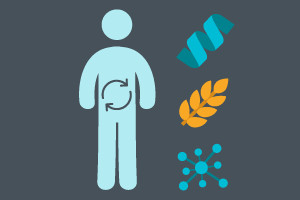Description
This anatomy course will take you through the organs involved in our food digestion as well as the most common causes of abdominal and pelvic pain. The most recent graphics and animations will assist you in discovering new insights and understanding of this part of the body, which has been the focus of anatomical research for centuries and is currently arousing renewed scientific interest. You will investigate the 3D anatomy of the organs, beginning with a fundamental understanding of anatomy and progressing to its advanced application in surgical procedures. This course will challenge you to discover and comprehend the anatomy of the abdomen and pelvis in all of its facets, from embryological underpinnings to gross topography and clinical applications.
The course is unique in that it connects basic anatomical knowledge from the lab with medical applications and current diagnostic techniques on a continuous basis. In forum discussions, you will have the opportunity to discuss anatomical and clinical problems with peers and experts, and you will be guided in exploring the wealth of anatomical information accumulated over the centuries.
Syllabus :
1. Mapping the abdomen and pelvis
- Introduction 'Mapping the abdomen and pelvis'
- Follow the food - A tour along the intestines
- Anatomy on the table - 'Follow the food': A tour along the intestines
- What do you see if you open the abdomen
- Anatomy on the table - What do you see if you open the abdomen
- Human Anatomy 101 - What you need to know
- Working with the viewers
- A tour of the abdomen and pelvis in the viewers
2. Trip into the gut
- Four layer model
- Peristalsis and muscle layer orientation: in-depth
- Esophagus histology at a glance
- Stomach histology in a nutshell
- GI Tract histology: Some practical pointers
- A slice of the gut at a glance
- Introduction embryology and what happened before
- Folding of the embryo
- Cavities
3. The gut and its 'suppliers and purchasers'
- Histology: Some practical pointers
- A slice of pancreas at a glance
- Liver histology at a glance
- Gut rotation in the embryo
- Animation
- Exercise embryology
4. Knowing your peritoneal relationships
- Why bother about the peritoneum
- What makes understanding the peritoneum so difficult
- The relation of the peritoneum to the gut
- Locations of the intestines in relation to the peritoneum
- Anatomy on the table - The three locations of organs in relation to the peritoneum
- Peritoneal terminology
- Peritoneal development
- Rotation of stomach, duodenum, pancreas
- Rotation of the bowels
- Development of the greater omentum
- Anatomy on the table - Peritoneal structures and relations – an overview
5. Protecting the internal organs
- Introduction of the abdominal wall
- General principles of the body wall
- From body wall to abdominal wall
- Structures of the abdominal wall
- Anatomy on the table - Demonstration of the superficial body wall
- Anatomy on the table - Demonstration on the deep body wall
- The hidden importance of the pelvic floor
- Urine and bowel continence
- Gems of the pelvis
- Overview female pelvis
- The extrauterine pregnancy
- How to use the OAH viewer
- Laparoscopy: normal pelvic organs
- Laparoscopy: Adnex extirpation
6. Pain!
- Anatomy of pain
- Organisation of the nervous system
- Anatomy on the table - Innervation of the viscera: Thorax
- Anatomy on the table - Innervation of the viscera: Abdomen
- Visceral stimuli
- Types of abdominal pain
- Visceral pain
- Referred pain
- From theory to practice
- Evaluating abdominal pain
- Examining the abdomen









